
Jesse Lane in his studio with his artwork ‘Adrenaline’
The emotion and passion that Jesse Lane masterfully portrays in his breathtaking portraits is awe-inspiring. There is no denying that he is a master of the medium of coloured pencil, but it’s also his ability to truly capture these intimate moments of the human condition that is most riveting about his work. From the moment we first view any one of his spectacular artworks, we are immediately drawn into Jesse’s private inner world. It’s a very personal portrayal of the struggles and challenges that he experiences. These struggles he portrays are universal – yet distinctive to each one of us. As we engage in viewing his work we are immediately faced with the reality of the limitations of our own human frailty.
Interview with Jesse Lane by Cindy Wider
Q: Please tell us your preferred art name year of birth and Country of origin (where you were born and raised and where you are living now):
A: I’m Jesse Lane. I was born in Houston, Texas (USA) in 1990. I now live in The Woodlands, Texas.
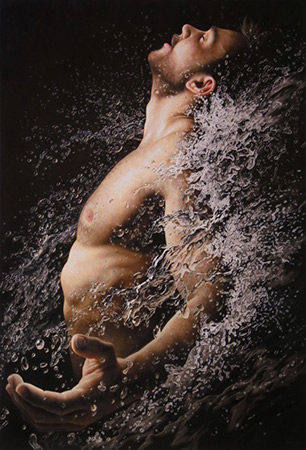
“Adrenaline” by Jesse Lane
Colored Pencil on Bristol Board – 40 x 27
Q: Jesse, could you tell us when you first realized that you enjoyed creating art as a child and were you supported in your decision, if so by who?
A: I think I always enjoyed creating art, but I wasn’t very good at it. When I was 14, my art teacher told me I was the worst in the class. The following year, I made friends with the art kids at school and that was when I really got into colored pencil. I started with little self confidence.
My dad, a former graphic artist, was supportive, but I didn’t always let him critique my work. When I finally did, I started getting better.
My fiancee and I met in high school and she’s a fabulous artist, mostly ceramics and sculpture. We constantly push and challenge each other.
I also had two highly encouraging teachers, Jim Kitchen, my high school instructor, and Tracy Visor, who owns an art academy in The Woodlands.
People refer to the ability to do art as a gift, especially when they see someone young doing it well. But the truth is, art was never a gift for me. It was something I had to work for. I did have a gift, though: people around me who encouraged me. I went to a high school with a great art department, not just a few art classes. I now have a supportive fiancee and encouraging parents, which is rare. You can control your talent with practice, but it can be much harder to control your environment.
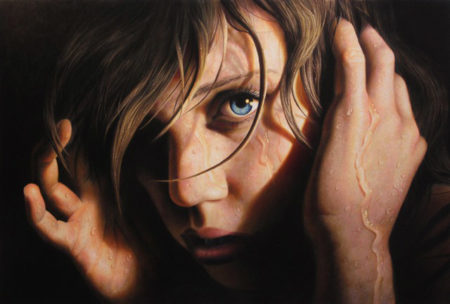
“Echoes” by Jesse Lane
Colored Pencil on Bristol Board – 30 x 20
Motivated by Struggles From the Past
Q: What journey have you been on as an artist. For example when did you first begin to create art as an adult? Did you study at all and if so where? How was that experience?
A: During the first few years I practiced rendering ability. Then I tried to create a style for my work using lighting and color.
I studied animation at Texas A&M University, but quickly decided that wasn’t what I wanted as a career. I began taking more drawing classes and trying to turn animation assignments into drawing ones. I walked my own path. At the time it was frustrating, but it got me thinking for myself instead of sticking to class assignments. Many artists can render well, but don’t know how to think originally.
Q: What is the primary motivation for why you create art? For example; Is it income or a burning passion to draw/paint?
A: While I enjoy drawing, my motivation is deeper than that. Going back to my past, I had little self confidence as a child and a teen. I was bullied, overweight and I have dyslexia and dysgraphia. I wanted to be anyone else but myself.
Despite those things, I was able to become an artist and I’m hoping to do what few have. I opened the door to my own life …and now that I have, I want to see what else is possible.
Right now, the world believes colored pencil is incapable, just as I used to believe I was incapable of anything significant. I want to prove that colored pencil is capable, that dyslexics are capable, and in a way, I’m still trying to prove I am capable.
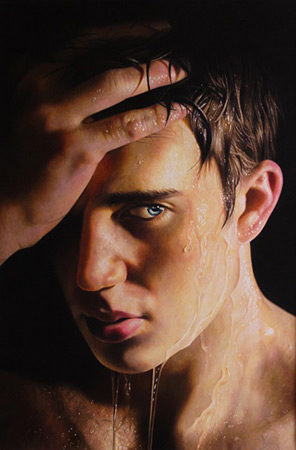
“Resolve” by Jesse Lane
Colored Pencil on Bristol Board – 30 x 20
Banishing Fear
Q: What goes through your mind while you draw/paint, is there a calm silence, do you listen to music or do you experience doubt, fear or any emotions at all? If you experience fear or doubt what do you do to overcome these feelings?
A: I used to almost always feel doubt. When I was 18, I decided to banish fear while drawing. I was going to do everything I could possibly do and apply every last color, and if that didn’t work, I’d try a different approach. And it worked! I was able to think things through more clearly and make smarter decisions. I enjoyed drawing more and was able to work longer before feeling worn out.
Art is a slow process. When someone feels fear, they try to find the fastest solution. In art, this usually means making more mistakes trying to fix or complete something.
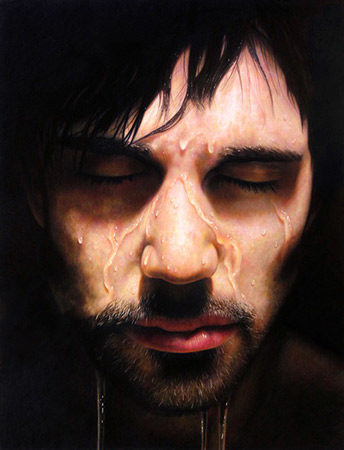
“After the Storm” by Jesse Lane
Colored Pencil on Bristol Board – 28 x 22
Importance of Establishing a Schedule
Q: How do you make time to include art in your life, do you have any suggestions to help others manage their creative lives?
A: Be intentional with your time and have a schedule. You can’t always expect others to fit into your schedule, but it helps if you establish one for yourself.
I have gone back and forth with the idea that I should draw more and sleep less. While there have been times I’ve had to embark on drawing marathons (once, for 61 hours straight), it’s not a good idea. I would rather have less time and be able to think clearly, than more time when I can’t perform well.
I’m learning that sometimes it’s important not to draw. I have heard that many artists have a vision of creating for 16 hours a day and being highly productive. But art passes through an artist. When you draw, you are outputting, but I think you have to input too. You can have sprints and a few marathons, but ultimately you have to take care of yourself.
Quantity doesn’t make a successful fine artist. Quality does. Show up at your best and give your full attention to the art with the time you have. No distractions.
As far as making time for art, I’ve discovered I’m most effective in the morning, so I try to do other things in the evening. If you do need to work at night, invest in lights that make blue light like the sun. Then you can work whether or not the sun is up.
While I do spend time doing fun things, it’s only if I am doing it with someone I really care about as a way of maintaining a relationship. I don’t spend time watching TV to relax. I draw with all the time I have available.
It’s a balance of being productive as an artist and recharging while spending time with loved ones.
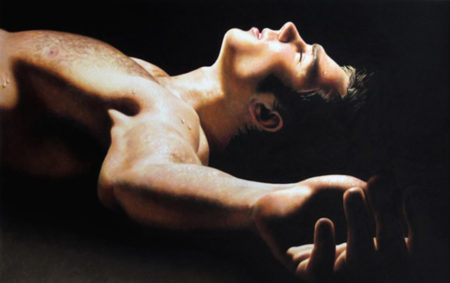
“Gravity” by Jesse Lane
Colored Pencil on Bristol Board 28 x 19
Gallery Representation
Q: Is drawing and creating artworks your only profession or main business. If not, what else do you do for work?
A: I sell my work through a wonderful gallery that specializes in narrative realism, RJD Gallery in Bridgehampton, New York. I also do workshops.
Q: Do you have any special unique advice or skills to share with other artists who are learning to create artworks at this very high standard that you are working at?
A: Treat every piece like it’s your next best piece. You grow most when you challenge yourself, like in the gym. While you do want every piece to be your next best, it doesn’t mean it will be. But there’s a positive correlation. Growth takes time, but it’s undeniable. We all have that one piece that we don’t like very much, but everyone else seems to enjoy. So make the best of every piece, because while you may not value it, others might and it could greatly help you.
Accept critique, it helps you know where to focus. You learn more with mistakes than successes.
Stay Inspired! When I was young, there were people who had much more talent than me… but I stayed inspired, kept on the same path with colored pencil and eventually reached beyond them.
Confidence. Everyone struggles with this. There’s a healthy balance between self doubt and self confidence. I see it in the best artists I’ve met. They have enough self confidence to attempt what they need to and to dream big, but they also realize where they need to work and improve. One area, like rendering, isn’t enough for them. These artists prefer a critique to a compliment. No matter how good an artist is, there’s always room to improve. Art is limitless and endless.
Be Stubborn! When you find your voice and your medium, stick to it. It’s good to experiment during your first few years, but once you find what you want to do, stick to it and perfect it as much as you can. That is the first step to building a name for yourself in the fine art world. I don’t try to draw landscapes. When an artist casts a net too wide, the artwork suffers.
Exercise. Art involves a lot of sitting. I think its good to get out and burn energy so my body can handle long periods of sitting.
Use the full range of contrast. Don’t be afraid of black or using the white of the paper.
You don’t have to render everything. It’s often best to leave some things up to the viewer’s imagination. That’s how you will keep a viewer coming back. Less is more.
Learn Photoshop. It’s a way of testing out ideas and creating a dynamic image without having to commit time to a drawing.
Plan. The more you can plan ahead, the more time you’ll save and the better your work will be.
Lastly, find a long-term teacher. This should be someone who knows your work well, even if they aren’t an artist. In school, teachers have scores of students and they see your work for only a semester. In school, few teachers have time to fully mentor you and help move to the next level. You need someone long-term who knows your work and understands what you’re trying to capture.
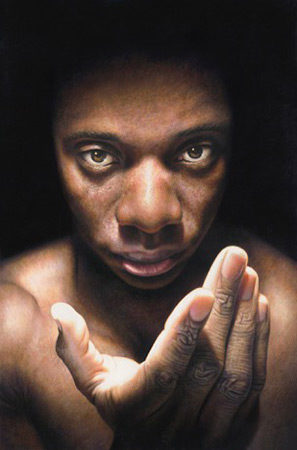
“Manifest” by Jesse Lane
Colored Pencil on Bristol Board – 30 x 20
Artwork on Derwent’s new Lightfast Pencils
Q: Jesse please tell us about any significant awards you have won or exhibitions that have made an impact on your life. Include any significant appearances in magazine articles, interviews, Television, radio, News papers etc. Tell us how these have helped to advance your art career.
A: I used to think if only I could get into a magazine, it would be enough to boost my career to the next level. Looking back, I don’t think there’s any one thing that advanced my career by leaps and bounds, except perhaps signing with RJD Gallery. It was more of a process, with each success and accomplishment building on the last.
I’ve been fortunate to receive several top honors for my work. It was a huge thrill when my portrait “After the Storm” appeared on the cover of The Artist’s Magazine with the headline “Colored Pencil Cracks the Fine Art Ceiling.” I was also blown away when “Manifest” won Best of Show at the Salmagundi Club’s Annual Juried Painting & Sculpture Exhibition for Non-Members. I’m only the second colored pencil artist to win the Grand Prize in International Artist Magazine’s “Favorite Subject’s” Competition. And most recently, I created a drawing to appear on the packaging and promotion of Derwent’s new line of lightfast drawing pencils, which will be available in July 2018.
Sometimes there are dry spells, and sometimes it feels like everything is happening all at once. I’ve had small things lead to big things. I think the key is to keep moving through the slow spells without losing enthusiasm.
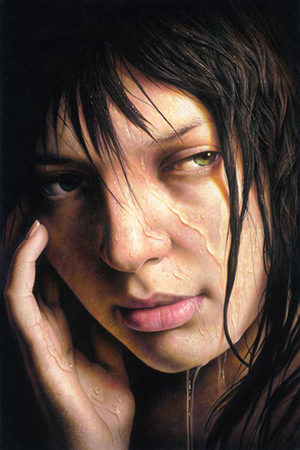
“Riptide” by Jesse Lane
Colored Pencil on Bristol Board – 30 x 20
Inspired by World’s Best Artists
Q: What major and significant goals and influences do you have for your art if any? Tell us who or what inspires you to be the best you can be as an artist.
A: While I have some specific goals, I’m private with them. I think talking about, instead of acting on, your goals can drain them of energy.
I started out drawing anime, and it still influences my work heavily. I enjoy watching it as I work. I love how dramatic it can be.
I want to walk alongside the world’s best colored-pencil artists. When I see someone else go all out and reach a new level, it motivates and inspires me to do the same. The artists I follow most are Holly Siniscal, Cecile Baird, Tanja Gant, Jeff George and Suzanne Vigil.
I want to help advance colored pencil in the world of fine art.
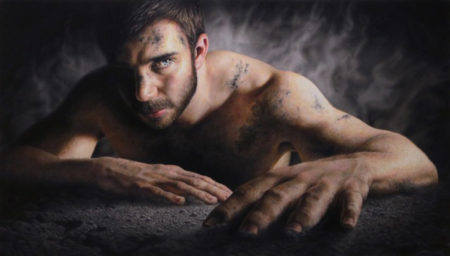
“Face Reality” by Jesse Lane
Colored Pencil on Bristol Board – 40 x 23
Facing Reality After the Fire
Q: Where do you see your art going into the future, do you have any goals at all for your long term development?
A: I don’t like to think too far ahead in terms of what I create. I create best when it feels fresh. I look for images that give me a rush when I first think of them. They make me excited to get started on them. Each drawing feels like a small chapter of my life .
I used to enter a lot of art competitions, but now my first priority is getting work to my gallery. I’m focusing more on publishing, getting my work in books and magazines.
Q: Is there anything else that you would like to tell me about your art journey so far and your inspiration to create art, that I could include in your interview to inspire others?
A: It’s not a story of triumph, but more of an empowering realization when something terrible happened in my art career.
In December of 2016, I had my first solo show, “Face Reality,” at RJD Gallery. The morning after the exhibit closed, the gallery was destroyed by a fire. I was devastated. I lost five major pieces that together, took over 1,000 hours to create. I had to start over. I had to Face Reality.
I felt small and the challenges seemed overwhelming. But as much as the fire upset me, everyday I still had the option to go into my studio and create new work. I think it was important for me to acknowledge the loss and draw inspiration. Sometimes triumph isn’t having some sort of amazing comeback, but pushing through unfortunate situations and getting through to the other side. Sometimes stubbornly persisting is the most important thing someone can do.
The silver lining is: the gallery and my work were fully insured. RJD reopened in a larger and more beautiful space, and last year was its best year ever.
Acknowledgment
DrawPJ.com would like to sincerely thank Jesse Lane for sharing with us his very personal experiences in life, and valuable advise for all artists who would like to pursue a balanced lifestyle. We wish him all the best in achieving his future goals and commend his achievements to date.
To see more from Jesse Lane, check out his work at the links below:
- Website: jesselaneart.com
- Gallery Representations: RJD Gallery Bridgehampton, New York
- Email: jesse@jesselaneart.com
- Facebook: https://www.facebook.com/jesselaneart/
- Instagram: @jesselaneart


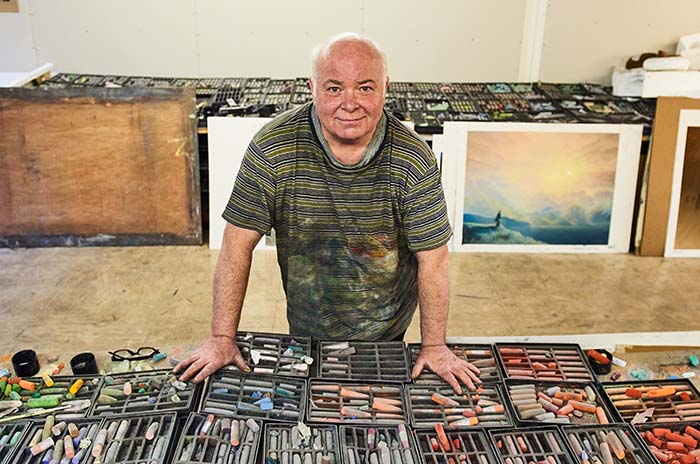
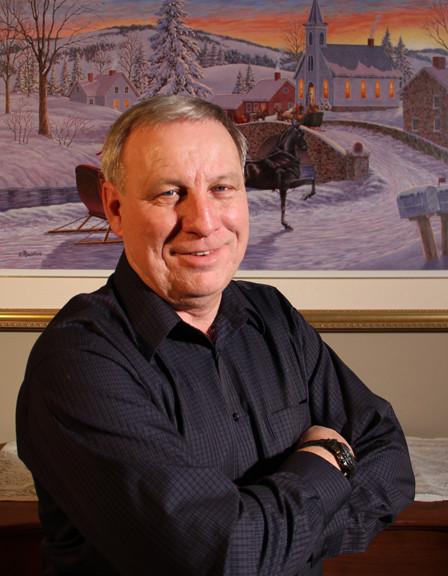
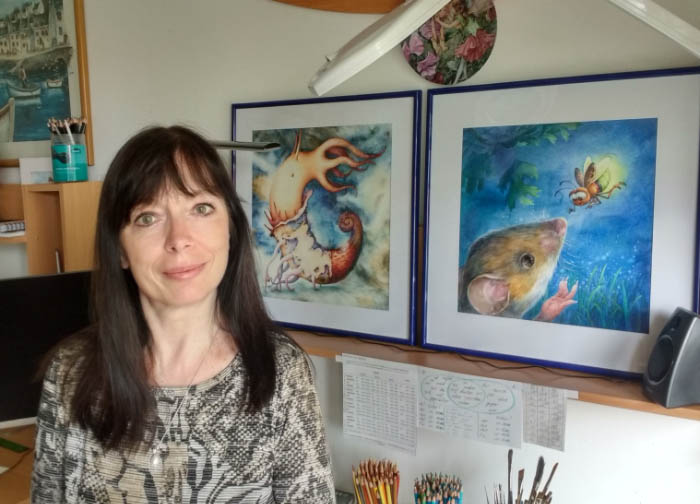
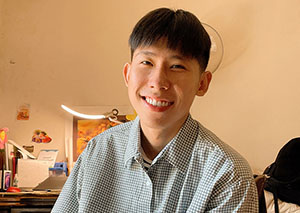
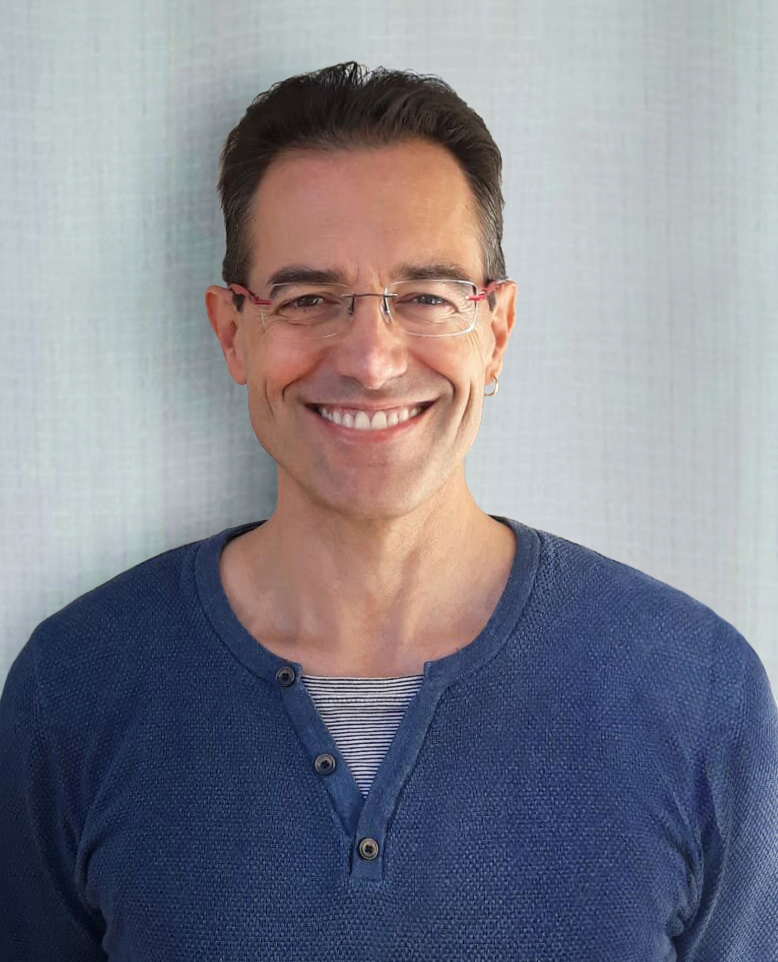
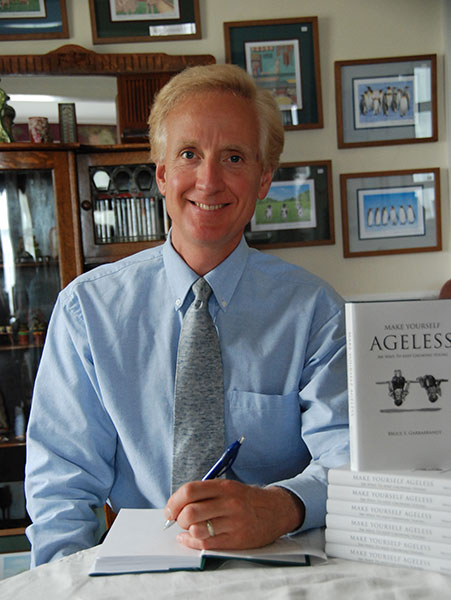
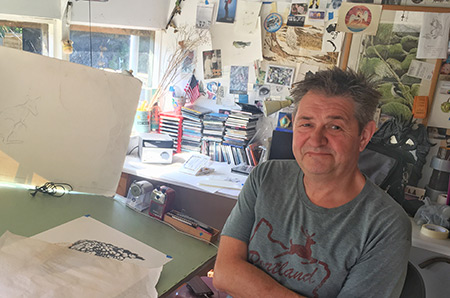
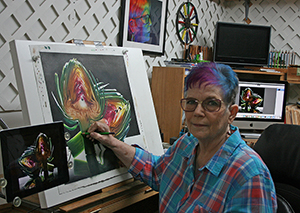
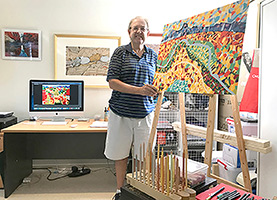
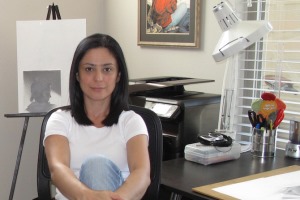
Absolutely mind opening to read about the inner thoughts of a great artist, especially one so young.
I like the part where Jesse mentioned about sticking to colored pencil art, which is still considered an inferior medium. And by him stubbornly sticking to his resolutions, had elevated this medium to a new level.
Discipline and motivation are the 2 main things that any artist who wants to succeed has to stick to. Nothing is ever smooth sailing, no matter how successful one is.
Reading this interview reflects my thoughts of being artist to the tee.
Thank you Jesse and Cindy for sharing .
Inspirational as always Jesse xx
I very much appreciate the significant contributions Jesse has made for colored pencil artists. He gives us credibility.
Wow, how exciting for you Jesse!
Have been following you right along via Facebook, your newsletter, and Ann Kullberg’s Color Magazine! I have purchased some of the Magazines with your amazing artwork on the covers. (I am 85 years old)
You have soared like a rocket from the beginning and heroically persevered through a tragic fire that destroyed some of your colored pencil masterpieces!
Jesse, you have been given a wondrous gift from God!
I regret that I will never get to meet you in person but I shall continue to follow your journey!
May God bless you and your lovely fiance’ on your upcoming wedding!
I love your work. It’s so hard to believe how life like your art has become. I have always loved art and I try to draw and paint. I’ve never tried pencil but maybe sometime soon. Keep up the wonderful work.
I think your work is wonderful and still find it difficult to believe that it is done with coloured pencils. It’s just so realistic. You obviously have develop a special skill.
Keep it up and please, for the pleasure of people like me, keep on sharing.
A great big thank you to you and wishing you even more success in the future. Carole
While your art is undeniably captivating, this quote is what gave me the most value:
“I would rather have less time and be able to think clearly, than more time when I can’t perform well.”